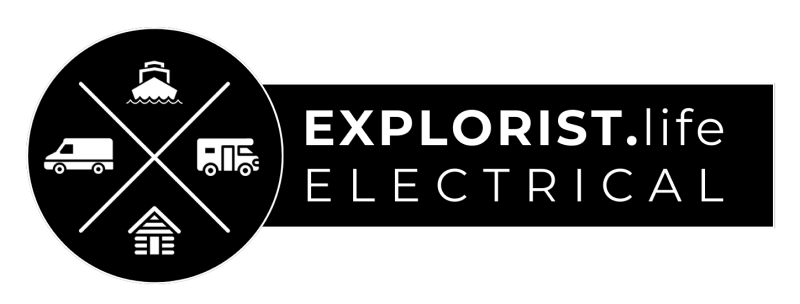
Welcome to Lesson 3 of the EXPLORIST.life Battery Basics series. In this lesson, we’ll explore the most common ways to wire a battery bank, explain what each method means, how it looks, and how it affects your overall battery bank voltage.

How to Wire a Battery Bank – VIDEO

Parallel Battery Wiring
Parallel wiring is one of the most straightforward methods to wire batteries. It involves connecting all the positive terminals together and all the negative terminals together.
Key Benefit: Voltage stays the same as the individual batteries.
2x 12V Batteries in Parallel = 12V Battery Bank

3x 12V Batteries in Parallel = 12V Battery Bank

4x 12V Batteries in Parallel = 12V Battery Bank

You can apply this same principle using 24V or 48V batteries. In all cases, the voltage remains the same as the individual batteries.


Parallel Wiring via Busbars
Instead of connecting terminals directly, you can wire each battery’s terminals to a busbar. This is common in more scalable systems and helps reduce wiring mess.
Example products: Victron Lynx Power In, Lynx Distributor

- All positives go to the positive busbar
- All negatives go to the negative busbar
- Voltage still remains unchanged

Series Battery Wiring
Series wiring involves connecting the positive terminal of one battery to the negative terminal of the next.
Key Result: The voltages add together.
2x 12V Batteries in Series = 24V Battery Bank

3x 12V Batteries = 36V

4x 12V Batteries = 48V

Always pull power from the terminals at the far ends of the series chain.
Series-Parallel Battery Wiring
Need both higher voltage and more amp-hour capacity? Enter series-parallel wiring.
- Wire two or more batteries in series to increase voltage
- Then wire those series strings in parallel to maintain capacity
Example: 2x 12V Batteries in Series, two series strings wired in parallel = 24V Battery Bank


This can scale massively—we’ve worked with systems using 24 batteries wired in this method!
Cons to Watch For
Series Wiring Drawbacks:
Easy to miswire; one wrong move could create a direct short.

Must pre-charge each battery to 100% before wiring.

Parallel Wiring Drawbacks:
- Almost none!
- Watch out for manufacturer limits when wiring more than 4–6 batteries in diagonal chains.

Busbar Consideration:
- More wiring and physical space required, but cleaner, scalable, and safer.
Miswiring = Big Problems
Incorrectly connecting a positive to a negative terminal in a parallel setup creates a direct short — potentially leading to combustion. Always double-check your layout.
Best practice: If positives and negatives ever connect directly, you’ve done something wrong.
How Many Batteries Can You Wire in Parallel?
Near infinite — especially with a busbar setup. You can link busbars and scale your system with dozens of batteries.
But, consider switching to higher-capacity batteries to reduce total count and complexity.
Examples:
- 270Ah Battle Born Batteries
- 460Ah Epoch Batteries
Need Help?
If you’re unsure which configuration works best for your setup, we’re here to help:
- Visit shop.explorist.life
- Chat with our support bot
- Email us at support@explorist.life
